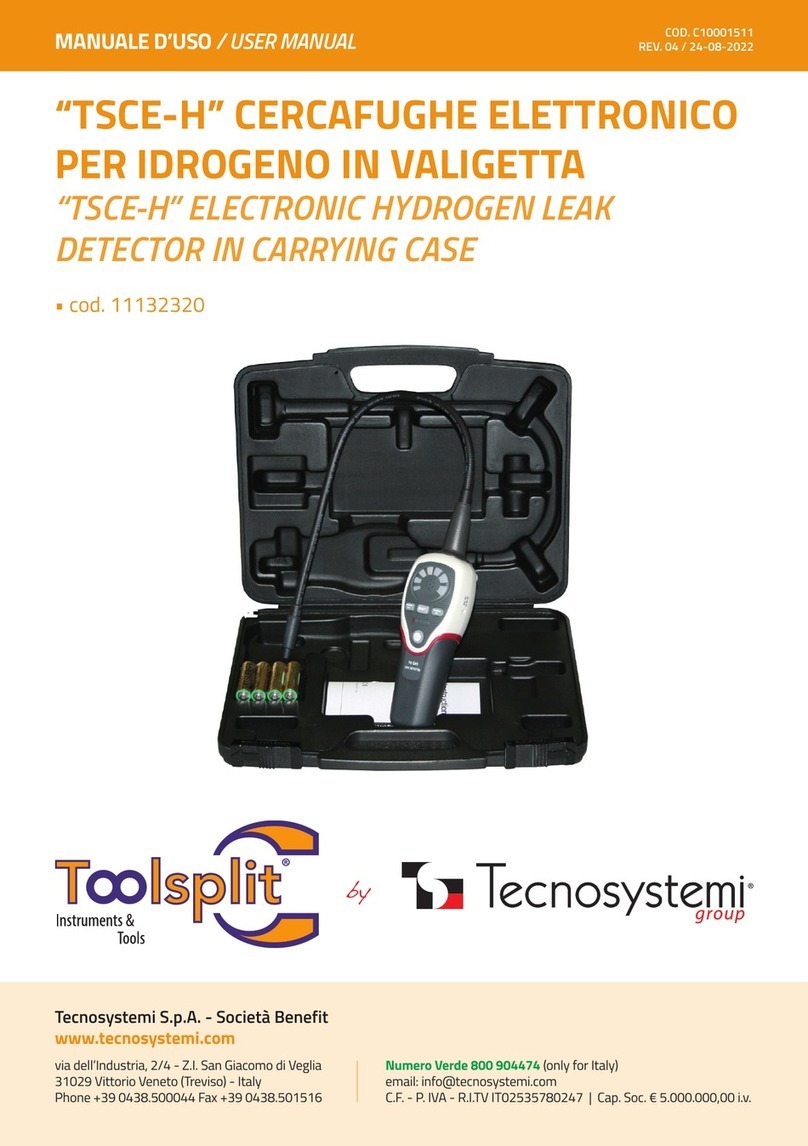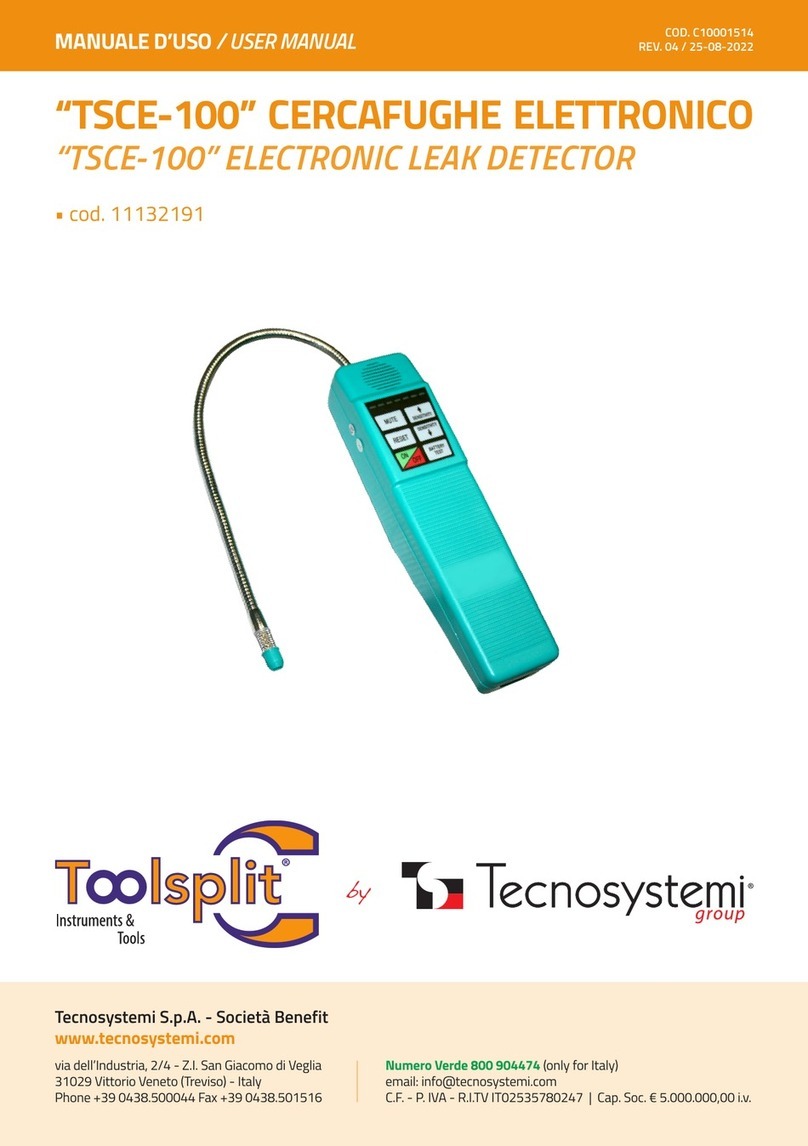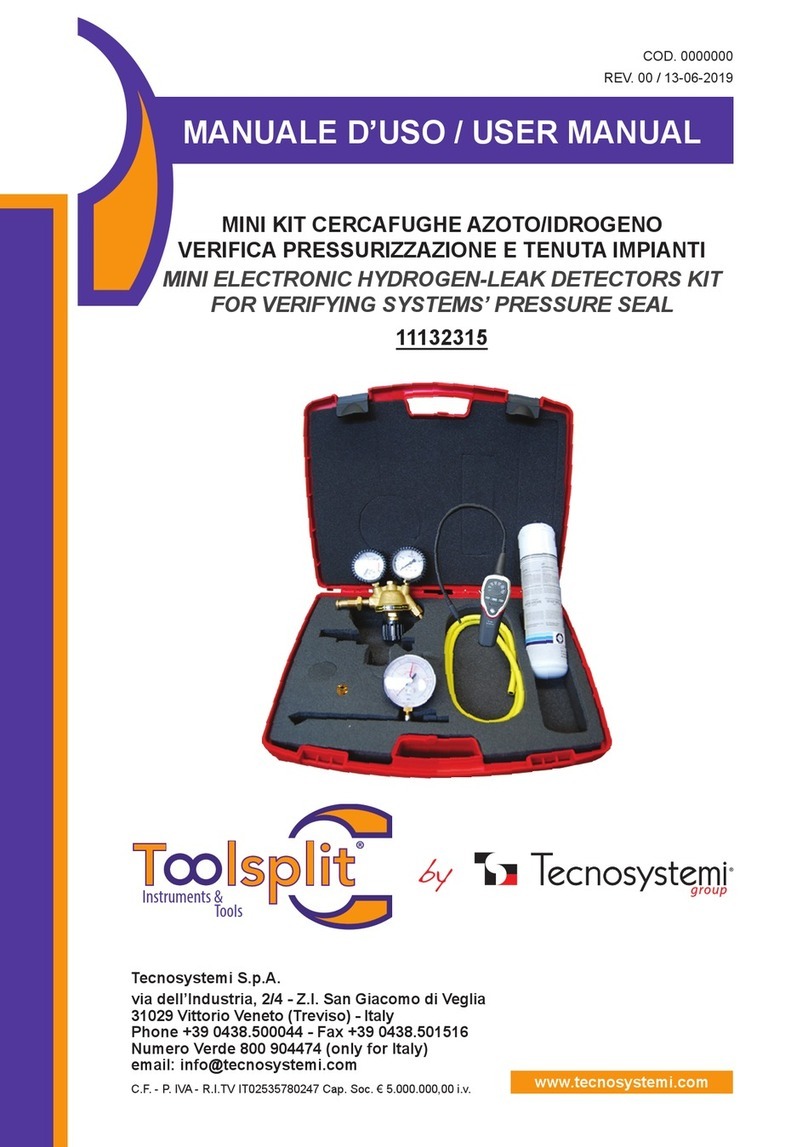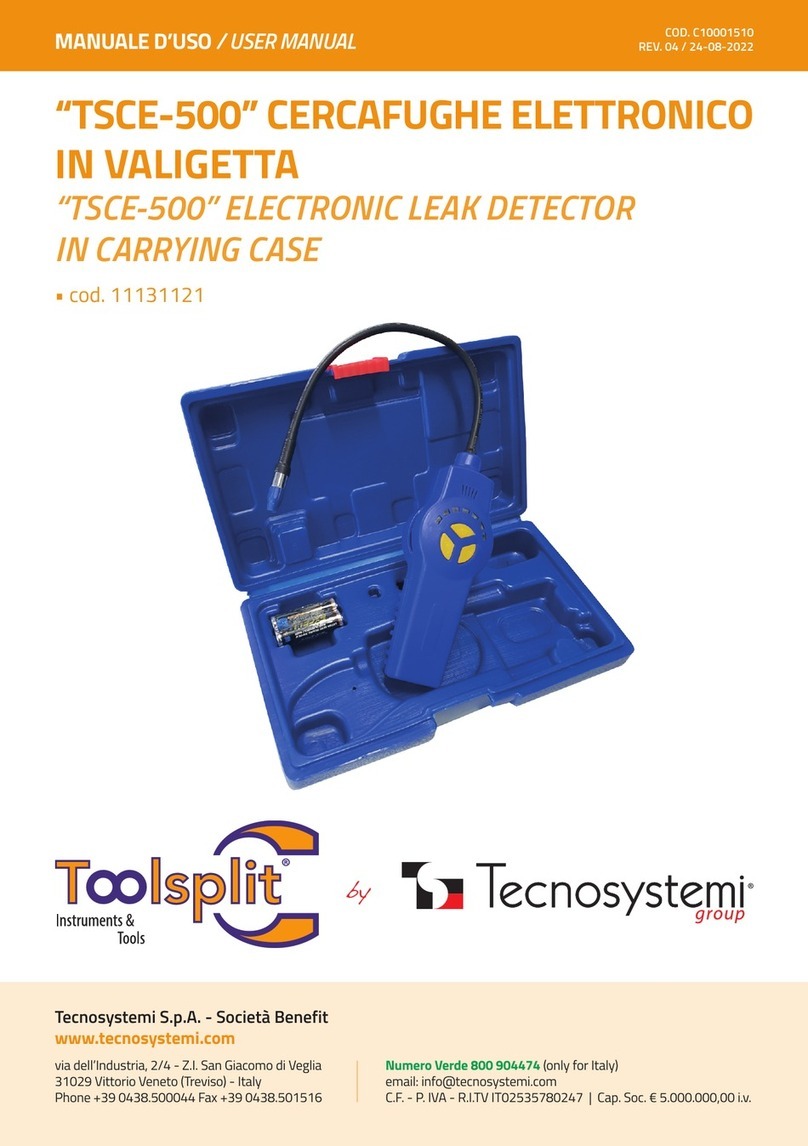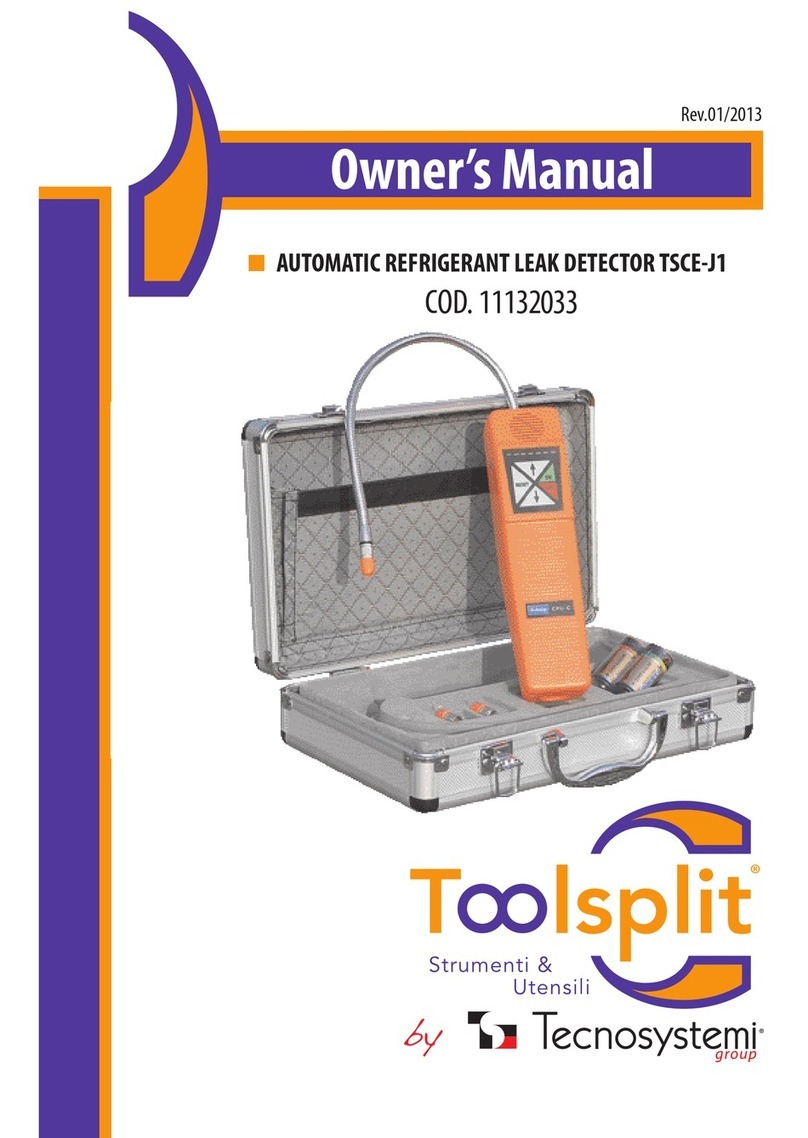
4
FUNZIONE DI CONTROLLO DELLE BATTERIE
Questa funzione si attiva premendo il tasto BATT.TEST. Una volta premuto, i LED visualizzeranno una barra grafica
tricolore indicante la vera tensione delle pile.
Tutti i LED non saranno sempre accesi; il numero di LED indica il livello di tensione.
La visualizzazione della tensione delle pile rimane finché il tasto BATT.TEST è premuto. Rilasciare il tasto BATT.TEST
per tornare alle operazioni normali. Questa funzione può essere attivata ad ogni momento durante l’operazione, e
non interrompe i segnali di allarme.
BATTERY CHECK FUNCTION
This function is activated by pressing the BATT.TEST button. Once pressed, the LEDs will display a three-colour graphic bar
indicating the actual voltage of the batteries.
All LEDs will not always be lit; the number of LEDs indicates the voltage level.
The battery voltage is displayed for as long as the BATT.TEST button is pressed. Release the BATT.TEST button to return to
normal operations. This function can be activated at any time during the operation, and does not interrupt the alarm signals.
CIRCUITO AUTOMATICO/FUNZIONE DI AZZERAMENTO
Il “Cercafughe elettronico professional” possiede un circuito automatico e una funzione di azzeramento che regolano
lo strumento di modo che esso ignori la concentrazione di refrigerante in ambiente.
AUTOMATIC CIRCUIT/RESET FUNCTION
The “professional electronic leak detector” features an automatic circuit and a reset function that adjusts the instrument so
that it ignores the concentration of refrigerant in the environment.
CIRCUITO AUTOMATICO -Dopo averlo acceso, lo strumento si regola da solo automaticamente per ignorare il livello
di refrigerante presente sulla punta. Soltanto un livello o una concentrazione più elevata può provocare un allarme.
ATTENZIONE: Portiamo alla vostra conoscenza che questa funzione farà sì che lo strumento ignorerà la presenza
di qualsiasi refrigerante, quando viene acceso. In altre parole, se si mette la punta della sonda vicino ad una fuga
conosciuta con lo strumento spento, e lo si accende dopo, nessuna fuga verrà rilevata!!
AUTOMATIC CIRCUIT-After turning it on, the instrument adjusts itself automatically to ignore the level of refrigerant on the
tip. Only a higher level or concentration can trigger an alarm.
ATTENTION: PLEASE, BE INFORMED THAT THIS FUNCTION WILL CAUSE THE INSTRUMENT TO IGNORE THE PRESENCE OF
ANY REFRIGERANT WHEN IT IS TURNED ON. IN OTHER WORDS, IF YOU PUT THE TIP OF THE PROBE NEAR A KNOWN LEAK
WHILE THE INSTRUMENT IS OFF, AND TURN IT ON LATER, NO LEAK WILL BE DETECTED!
FUNZIONE AZZERAMENTO - Premendo il tasto RESET durante l’operazione effettua una funzione simile.
Quando viene premuto il tasto RESET, questo programma il circuito di modo che ignori il livello di refrigerante presente
sulla punta. Ciò permette all’utilizzatore di dirigersi automaticamente verso la fonte della perdita (concentrazione più
elevata). Similarmente, lo strumento può essere all’aria fresca e rimesso a zero per una migliore sensibilità.
L’azzeramento dello strumento in assenza di refrigerante (all’aria fresca) permette di rilevare qualsiasi livello
superiore a zero. Ogni volta che lo strumento è azzerato, i LED (eccetto l’indicatore di alimentazione sull’estrema
sinistra) diventeranno arancione per 1 secondo. Questo dà la conferma visiva dell’azzeramento.
REGOLAZIONE DELLA SENSIBILITÀ
Il “Cercafughe elettronico professional” offre sette livelli di sensibilità. Il livello di sensibilità è indicato sul display
quando si preme il tasto SENSITIVITY con la freccia in alto oppure il tasto SENSITIVITY con la freccia in basso. Il
segnale acustico offre anche un’Indicazione del livello di sensibilità.
Quando si accende lo strumento, esso si posiziona automaticamente sul livello 5 di sensibilità.
RESET FUNCTION - Pressing the RESET button during the operation has a similar function.
When the RESET button is pressed, it programs the circuit to ignore the level of refrigerant on the tip. This allows the user to
automatically head towards the source of the leak (higher concentration). Similarly, the instrument can be in fresh air and
reset to zero for better sensitivity.

